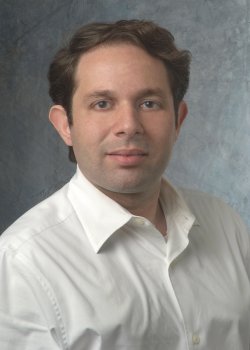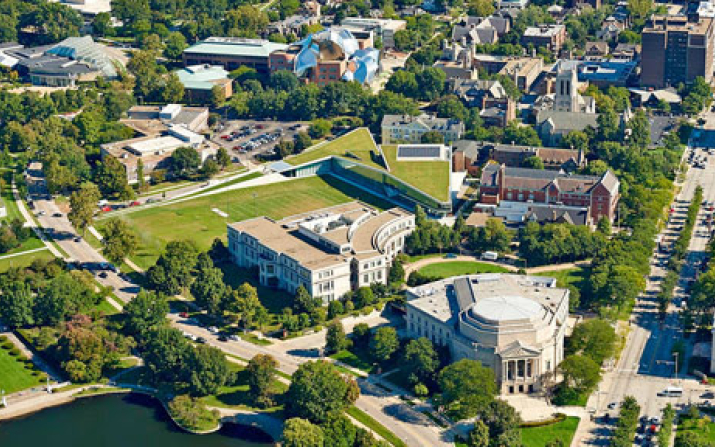
National Academy of Inventors names eight Case Western Reserve University researchers to 2023 class of senior members

Represents most accepted from any member institution
Eight researchers affiliated with Case Western Reserve University have been named senior members of the National Academy of Inventors (NAI)—the largest class ever from the university—and from any member institution since the academy began the awards in 2018.
The new senior members at Case Western Reserve include academic leaders in genomics and bioinformatics, molecular medicine and bioengineering and a variety of other engineering disciplines. They join nearly 20 other faculty members who have achieved senior membership or a NAI fellowship.
“NAI’s recognition of our faculty’s remarkable creativity and leadership in solving real-world problems is terrific,” said Michael Oakes, senior vice president for research and technology management at Case Western Reserve. “It speaks to our growing reputation in becoming known as a problem-solving institution, which is vital to our collective mission.”
NAI senior members are active faculty, scientists and administrators from NAI-member institutions who have “demonstrated remarkable innovation producing technologies that have brought, or aspire to bring, real impact on the welfare of society,” and are among “95 of the foremost emerging academic inventors” identified by its member institutions, the academy said in a news release announcing the new class.
Senior members are expected to have growing success in patents, licensing and commercialization, while educating and mentoring the next generation of inventors.
The 2023 class of senior members will be inducted at the 12th NAI Annual Meeting on June 26 in Washington, D.C.
Eight leaders in engineering, medicine
The 2023 senior member class from Case Western Reserve has appointments in Case School of Engineering, School of Medicine and Cleveland Clinic Lerner College of Medicine at CWRU.
A number are affiliated with other Northeast Ohio institutions and some have appointments in other colleges at CWRU. Several have appointments in biomedical engineering, a joint department between the schools of engineering and medicine.
The new members from CWRU are:
Drew Adams
Drew Adams, associate professor of genetics and genome sciences, School of Medicine and member of the Developmental Therapeutics Program, Case Comprehensive Cancer Center.
His research occurs at the interface of chemistry and biology.
His team uses synthesis and high-throughput screening to identify new bioactive small molecules, and then uses chemical biology techniques to characterize the cellular mechanisms of leading hits.
Ozan Akkus
Ozan Akkus, the Kent H. Smith Professor of Engineering, mechanical and aerospace engineering, Case School of Engineering.
He is also founder of the Tissue Fabrication and Mechanobiology Laboratory, part of the Musculoskeletal Mechanics and Materials Consortium, affiliated with the National Center for Regenerative Medicine.
Akkus has published more than 130 peer-reviewed journal articles, 180 peer-reviewed conference abstracts, and co-authored several book chapters with colleagues.
Mark Chance
Mark Chance, the Charles W. and Iona A. Mathias Professor of Cancer Research; director, Center for Proteomics and Bioinformatics; and professor of nutrition, professor of genetics and genome sciences, School of Medicine.
He is an internationally recognized expert in proteomics and structural biology who has built multiple internationally recognized science and training programs.
Chance has published over 300 papers with over 18,000 citations. He has multiple patents and patent filings and has launched a startup company, NeoProteomics, Inc.
Margot Damaser
Margot Damaser, professor of biomedical engineering at the Cleveland Clinic Lerner College of Medicine; head of urological biomechanics laboratory in biomedical engineering at the Lerner Research and Glickman Urological and Kidney Institutes of Cleveland Clinic; senior rehabilitation career scientist at Louis Stokes Cleveland Department of Veterans Affairs Medical Center and deputy director of the Advanced Platform Technology Center.
She is an internationally recognized expert in the study of female pelvic floor disorders, including pelvic organ prolapse, urinary incontinence and fecal incontinence.
Damaser was granted a Presidential Early Career Award for Scientists and Engineers in 2000.
William Grissom
William Grissom, professor of biomedical engineering. His research aims to “re-invent conventional imaging techniques to maximize their information content and value.”
His lab’s MRI research projects integrate advancements in radiofrequency (RF) pulses with novel RF coils and computation to complement or replace existing technology.
He also works to develop real-time on MRI acquisitions and hardware for MR-guided focused ultrasound therapy, ultrasound neuromodulation to treat neuropathic pain and robotic laser thermal therapy to treat epilepsy.
Kevin Kilgore
Kevin Kilgore, adjunct professor of biomedical engineering; professor of orthopedics and physical medicine and rehabilitation (OPM&R), School of Medicine; staff scientist, OPM&R department, MetroHealth System; biomedical engineer, Louis Stokes Cleveland Veterans Affairs Medical Center; investigator, Cleveland FES Center.
His research focuses on the use of neuroprosthetics to improve function in spinal cord injury.
He also helped develop the Networked Neuroprosthetic System, a modular implantable system.
Dan Ma
Dan Ma, assistant professor of biomedical engineering, Case School of Engineering, School of Medicine.
Her research focuses on magnetic resonance fingerprinting, quantitative magnetic resonance and neuroimaging.
Applications for the work may be found in brain tumors, multiple sclerosis and Alzheimer’s disease.
Pedram Mohseni
Pedram Mohseni, professor and department chair, electrical engineering and computer science, Case School of Engineering.
His research focuses on biomedical microsystems, bioelectronics, wireless neural interfaces, semiconductor interface circuits for micro-electromechanical systems, low-power wireless sensing/actuating microsystems and point-of-care diagnostic platforms for personalized health.
A list of all CWRU past and present members can be found on the NAI web site.

